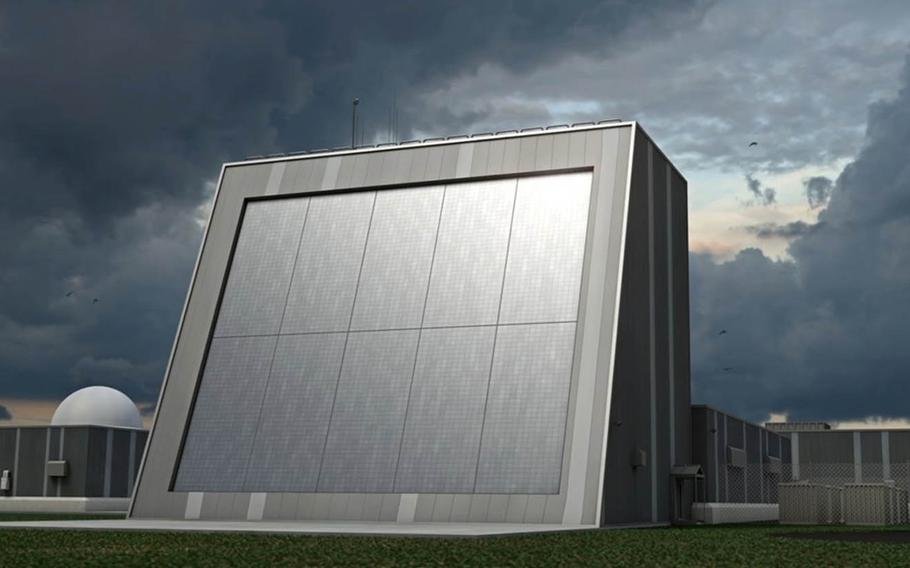
By William Cole,
Published by Stars and Stripes, 14 July 2021
Tribune News Service — The Homeland Defense Radar-Hawaii — which the Pentagon zeroed out two years in a row in its funding requests — is back with $75 million approved by the House Appropriations Committee today in the fiscal year 2022 defense funding bill.
U.S. Rep. Ed Case said the $706 billion total defense measure, passed in a 33-23 vote, advances a “strong national defense presence in Hawaii and the Indo-Pacific.”
“I especially welcome the bill’s support of my many requests to maintain and advance our defense efforts in Hawaii and throughout the Indo-Pacific in a time of such uncertainty in our part of the world, ” the Hawaii Democrat said in a release. “These include in particular support for the Pearl Harbor Naval Shipyard and Intermediate Maintenance Facility, our largest industrial employer, and to continue the Homeland Defense Radar-Hawaii (HDR-H ), which is critical to ensuring Hawaii’s own security.”
Case said the bill includes $75 million to continue development of the radar that was estimated by the Missile Defense Agency to have a $1.9 billion total price tag.
The radar is a “critical” state-of-the-art system “designed to protect our country and state from ballistic missile threats from countries like North Korea and was strongly supported by our Indo-Pacific military leaders. This ‘discriminating radar’ will be capable of identifying and classifying specific missile threats and will address current and emerging threats,” Case said in the release.
Case, a member of the Appropriations Committee, said he specifically sought restoration of funding for the Hawaii radar.
Other funding measures in the bill include:
— $5 million to continue improving the safety of the Red Hill Bulk Fuel Storage underground tanks. “This funding is being applied toward evaluating secondary containment, measuring and controlling corrosion, improving testing, inspection, repair and maintenance processes, and improving groundwater monitoring and modeling. This funding ensures the safety of our precious drinking water, while mitigating any risks at Red Hill, ” Case said.
— Continued funding of over $2.2 billion for the Shipyard Infrastructure Optimization Plan (SIOP ) at Pearl Harbor Naval Shipyard. Case said he requested funds to ensure support for a 20-year, $21 billion effort by the Navy to improve its four public shipyards, including Pearl Harbor shipyard, Hawaii’s largest industrial employer.
— Case said support is being provided “for various elements of the Pacific Deterrence Initiative (PDI ), which bolsters deterrence and maintains our competitive edge in the Indo-Pacific in recognition of threats posed by China and the need to preserve a free and open Indo-Pacific.”
A key component of the initiative for fiscal 2022 is $62.4 million for the missile defense of Guam, which faces threats from ballistic, hypersonic and cruise missiles, Case said.
In a June 2 letter, U.S. Rep. Kai Kahele, also a Hawaii Democrat, joined a bipartisan group in calling on Congress to fully fund the $4.68 billion request made by Adm. Phil Davidson, the former head of U.S. Indo-Pacific Command, for the Pacific Deterrence Initiative in fiscal 2022.
Indo-Pacific Command “has an urgent requirement for a more lethal, hardened and dispersed American military posture in the Indo-Pacific region, ” the letter states. “Resourcing this posture would reassure our allies and partners, while sending an unmistakable message to our adversaries in support of a free and open Indo-Pacific.”
The letter writers said a total of $350 million was requested in fiscal 2022 for a Guam Defense System that provides 360-degree air and missile defense system and long-range strike capability.
The Homeland Defense Radar-Hawaii also is identified in Davidson’s Pacific Deterrence Initiative request as a priority.
But both the Hawaii radar, which was to be used to better track North Korean intercontinental ballistic missile threats, and a separate Pacific radar, were shelved by the Defense Department as maneuvering hypersonic missiles necessitated a re-examination of ground-based radar needs and a focus on space-based sensors to help meet the emerging threats.
The Hawaii radar is not included in the Missile Defense Agency’s long-range program planning.
Kahuku Training Area on Oahu and the Pacific Missile Range Facility on Kauai are the two locations that technically are still under consideration for the powerful radar, planned to have a single face up to 85 feet tall. Community opposition previously emerged on Oahu.
The Missile Defense Agency previously said it was using last year’s $133 million congressional “plus up” for the Hawaii radar for production of “critical radar components” and studies “for the siting and development of the (radar) — should a deployment decision be made and is funded.”
Case pointed to other funding measures in the appropriations bill, including :
— $292.5 million for environmental restoration at formerly used defense sites. “These funds will help accelerate efforts to remove unexploded ordnance and discarded military munitions in Hawaii and throughout the nation, ” Case said.
— Case said the Appropriations Committee again blocked efforts to change the command and control structure of the U.S. Pacific Fleet at Pearl Harbor. “There have been efforts within the department to streamline control of forces under one command structure, which would limit the ability of Navy forces in Hawaii to respond quickly to changing threats in the Indo-Pacific region, ” he said.
See: Original Article





